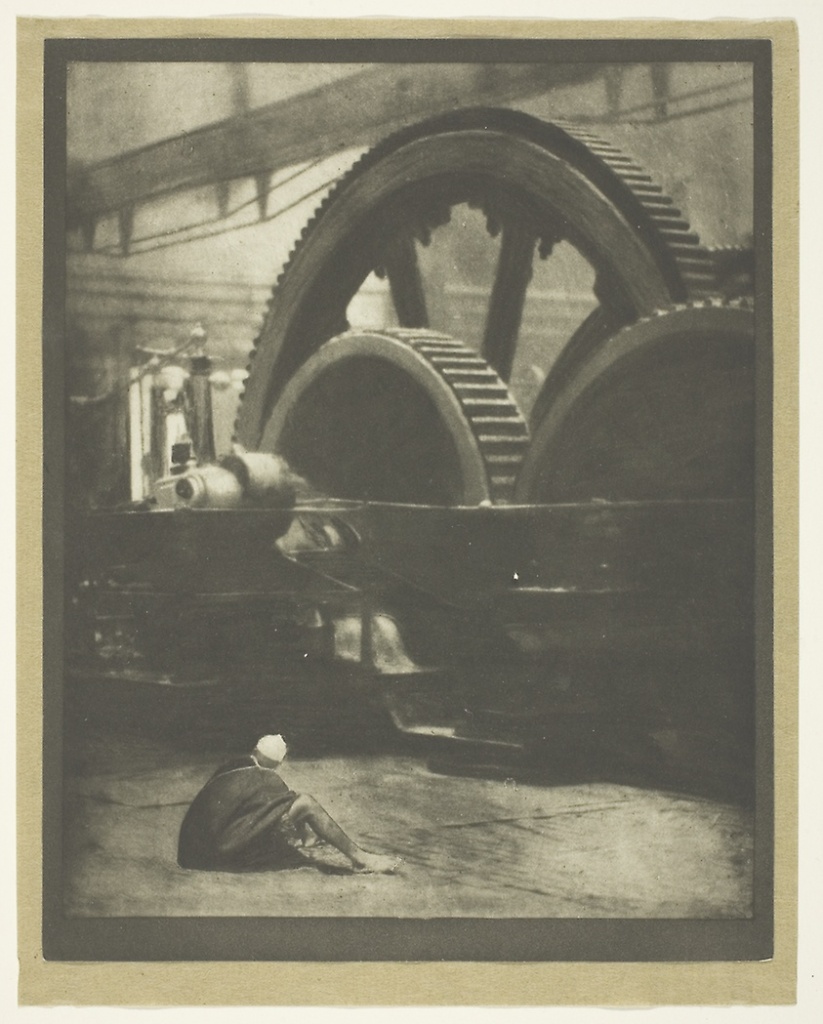“The Lord of the Dynamos” is a short story by the English author H. G. Wells (1866–1946), first published in the Pall Mall BudgetWeekly magazine published in London from 1868 until 1920. on 6 September 1894 and subsequently in The Stolen Bacillus and Other IncidentsCollection of 15 short stories by H. G. Wells, first published in 1895. (1895) and The Country of the Blind and Other StoriesCollection of 33 short stories by H. G. Wells, first published in 1911. (1911). It concerns a stoker employed at an electricity-generating station in Camberwell, who becomes convinced that a large dynamo is a deity, and kills his superior in a religious frenzy.[1]
Synopsis
Azuma-zi, a character of ill-defined but dark-skinned race, apparently of South-East Asian origin, arrives in London from the Straits Settlements[a]Territories along the Straits of Malacca formerly controlled by the East India Company: Penang, Malacca and Singapore.[2] on board a steamer on which he was a stoker. He speaks no English and is bewildered by the turmoil of London; he loses all the money he has earned serving on the steamer and eventually finds work, again as a stoker, in a power station at Camberwell which supplies power to an underground electric railway.[b]Given the date of publication, this can only be the City and South London Railway, although the power station supplying this line was actually at Stockwell.[2]
The power station is in the charge of a bully named James Holroyd, an electrician from Yorkshire, who is delighted to have a negro assistant “because he would stand kicking”. He drinks whisky while on duty, and lectures Azuma-zi – whom he calls Pooh-bah[c]Pooh-bah is The Lord High Everything Else in the Mikado (1885), a comic opera written by Gilbert and Sullivan.[2] – against superstition and missionaries, and suggests to him that the largest and most impressive of the three dynamos in the plant is more of a “Gord” than the one preached by missionaries; “where’s your ‘eathen idol to match ‘im?”
Azuma-zi is powerfully impressed by the humming, whirling machinery and comes to believe that the big dynamo is indeed a god. He starts to worship it; he salaams to it when he arrives at work, prays to it to save him from Holroyd, cleans and polishes it with devotional care, and anoints it with oil – by which he unintentionally damages an area of the insulating varnish on the coils, and on discovering this Holroyd orders him to stay away from the machine with threats of violence.
Holroyd’s bullying and Azuma-zi’s dynamo worship combine to convince Azuma-zi that his god disapproves of Holroyd and eventually that it desires Holroyd as a human sacrifice. Azuma-zi surprises Holroyd, trips him and throws him against the exposed live terminals on the end of the dynamo, where he is electrocuted. Investigation of Holroyd’s death is extremely perfunctory; the police are not called, Holroyd is presumed to have committed suicide, and nobody thinks to suspect Azuma-zi of murder.
Holroyd is replaced by a character named only as “the scientific manager”; in contrast to Holroyd’s bullying, he takes very little notice of Azuma-zi at all. Nevertheless, impressed by the swift death inflicted on Holroyd by the dynamo, Azuma-zi decides to make the scientific manager a sacrifice as well. But the scientific manager fights back, and manages to keep himself clear of the live parts until a third person arrives on the scene, at which Azuma-zi panics, abandons the struggle and seizes the live terminals in his own hands.
See also
- H. G. Wells bibliographyList of publications written by H. G. Wells during the more than fifty years of his literary career.
Notes
| a | Territories along the Straits of Malacca formerly controlled by the East India Company: Penang, Malacca and Singapore.[2] |
|---|---|
| b | Given the date of publication, this can only be the City and South London Railway, although the power station supplying this line was actually at Stockwell.[2] |
| c | Pooh-bah is The Lord High Everything Else in the Mikado (1885), a comic opera written by Gilbert and Sullivan.[2] |
References
Bibliography
External links
- Full text of “The Lord of the Dynamos” at Project Gutenberg

